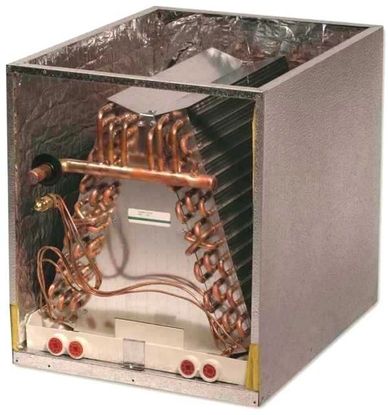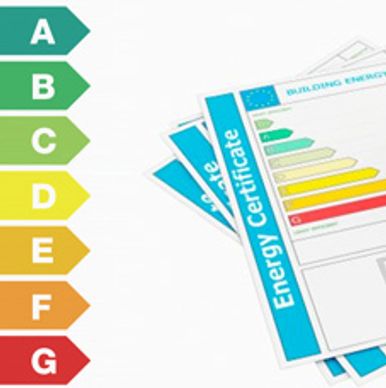HVAC Terminology 1
A-Coil

A heat exchanger (evaporator coil) consisting of two diagonal coils that are joined together in a manner that looks like the letter “A”. An air conditioner’s evaporator coil, also called the evaporator core, is the part of the system where the refrigerant absorbs heat. That is, it’s where the cold air comes from. The evaporator coil is located inside or near the air handler where the blower fan is. Evaporator coils are made from copper, steel, or aluminum because these metals conduct heat easily. Most residential AC evaporators consist of tubes bent into U-shapes and set into panels. The panels are typically positioned in the form of an “A.”
Heat exchanger

Heat exchanger - a device used to transfer (exchange) heat or thermal energy. Usually heat exchanger is an area, box or coil where heat flows from the warmer to the colder fluid or surface. The major part of the furnace that transfers heat into your home. Heat exchangers are either given a hot fluid to provide heating or a cold fluid to provide cooling. A hot/cold fluid can be either a liquid or a gas Heat always flows from hot to cold There must be a temperature difference for heat to flow Thermal energy is transferred via three methods.
- Conduction
- Convection
- Radiation
HVAC

Heating, ventilation, and air conditioning (HVAC) is the technology of indoor and vehicular environmental comfort. Its goal is to provide thermal comfort and acceptable indoor air quality. HVAC is an important part of residential structures such as single family homes, apartment buildings, hotels and senior living facilities, medium to large industrial and office buildings in Lake County, IN. The three major functions of heating, ventilation, and air conditioning are interrelated, especially with the need to provide thermal comfort and acceptable indoor air quality within reasonable installation, operation, and maintenance costs. HVAC systems can be used in both domestic and commercial environments. HVAC systems can provide ventilation, and maintain pressure relationships between spaces.
AFUE

AFUE is an acronym for Annual Fuel Utilization Efficiency, which is a measure of how efficiently your furnace can utilize it's fuel. The more efficient your furnace, the more heat you will get per unit of fuel. AFUE - a thermal efficiency measure of space-heating furnaces and boilers, its not true 'thermal efficiency' because it is not a steady-state, peak measure of conversion efficiency, but instead it attempts to represent the actual, season-long, average efficiency of certain piece of equipment, including the operating transients. For example, a 90% AFUE for a gas furnace means it outputs 90 BTUs of useful heating for every 100 BTUs of natural gas input (where the rest may be wasted heat in the exhaust). A higher AFUE means higher efficiency.
HVAC Efficiency
HVAC Efficiency

HVAC EFFICIENCY – A rating on comfort equipment, a measure of its energy usage to heating and cooling efficiency. The U.S. Small Business Administration notes that HVAC equipment accounts for 40 percent of energy usage in commercial buildings. Heating and cooling efficiency is the most effective way that people can decrease their overall energy consumption. Setting your thermostat closer to the temperature outside will save you quite a bit and increase your HVAC energy efficiency. When it's hot outside, a HVAC system set at 75 degrees will use 18% more energy than one set at 78 degrees. And setting it at 72 degrees uses 39% more energy than 78 degrees. List of Different Energy Efficiency Ratings
- SEER – Seasonal Energy Efficiency Ratio
- EER – Energy Efficiency Ratio
- HSPF – Heating Seasonal Performance Factor
- AFUE – Annual Fuel Utilization Efficiency
Tune-Up
HVAC Efficiency
Air Conditioner or Furnace tune-up is a type of preventive maintenance performed on a HVAC System to ensure it continues to perform well. A tune-up for your heating or cooling system is just like a tune-up for your car; it’s main goal to keep your AC or Furnace running at its peak efficiency. A tune-up is typically regularly scheduled once or twice a year. During a regular tune-up, our technician examines the heating/cooling unit from top to bottom and takes care of several things, such as:
- Calibrating the thermostat
- Cleaning condenser & evaporator coils
- Flushing the drain
- Examining and tightening all electrical parts
- Replacing damaged or faulty electrical parts if needed
- Evaluating refrigerant levels and observing for leaks
- Adding new Freon if needed
- Changing and replacing the air filters
- Replacing worn pulleys and belts
- Checking the operation of the blower belt and motor
Air Conditioning & Heating Tune-ups are recommended because they can help prevent big problems in the future or catch problems while they’re still small and easy to fix.
When you have a tune-up performed, it will typically include the replacement of several important wear-and-tear parts.
CFM
Thermostat
Furnace

CFM (Cubic Feet per Minute): It is a measurement of the velocity at which air flows into or out of a space. Cubic Feet per Minute (CFM) - Unit of airflow employed in air-conditioning. For example, a typical air conditioner produces about 400 CFM for each ton of its cooling capacity. One CFM equals about 28.31 liters per minute.
Furnace
Thermostat
Furnace
Furnace (also Heater) - a part of the heating system in residential buildings, here occurs the combustion of fossil fuel such as natural gas for example and transfer of heat. Gas jets along a burner ignite to create the hot combustion gas that raises the temperature of air, which fans then circulate through the ducts. A natural gas furnace is a great way to heat your home. It provides quick, powerful heating at a relatively low cost per month. Almost every kind of furnaces burns fuel to create heat.
Four main types of furnaces:
- Natural gas furnace
- Oil furnace
- Electric furnace
- Propane furnace
Electric furnaces can heat the air by exposing heated elements, while other types of furnaces typically require a heat exchanger or chamber that warms the surrounding air.
Furnaces remain the most popular choice for home heating due to their high efficiency, low operating noise, long lifespans, compatibility, and more.
Thermostat
Thermostat
Thermostat
THERMOSTAT- is a component which senses the temperature of a physical system and performs actions so that the system's temperature is maintained near a desired setpoint.
A thermostat is a system that monitors and regulates a heating or cooling system. It can be used to set the desired temperature at which it keeps the environment either heated or cooled.
Thermostats are used in any device or system that heats or cools to a setpoint temperature, examples include building heating, central heating, air conditioners, HVAC systems, water heaters, as well as kitchen equipment including ovens and refrigerators.
Newer digital electronic thermostats (Programmable thermostat), have no moving parts to measure temperature and instead rely on thermistors or other semiconductor devices such as a resistance thermometer. Digital thermostats use either a relay or a semiconductor device such as triac to act as a switch to control the HVAC unit. HVAC systems with the ability to modulate their output can be combined with thermostats that have a built-in PID controller to achieve smoother operation.
Most digital thermostats in common residential or commercial use in North America are programmable thermostats, which will typically provide a 30% energy savings if left with their default programs; adjustments to these defaults may increase or reduce energy savings.
More HVAC terms and info
Why Choose Us

One of the Best Heating and Cooling Company in Lake County, IN
- Satisfied customers
- Qualified staff
- Licensed, Bonded
- Highly Competitive Prices
- Best Customer Service
- Emergency Services
- Same Day Services Available
- BEST OFFERS AC Repair in Schererville, AC repair in Dyer, AC repair in Saint John, AC repair in Munster, AC repair in Highland | AC repair in Merrillville | AC repair in Crown Point and surrounding areas
- BEST OFFERS Heating repair in Schererville, Heating repair in Dyer, Heating repair in Saint John, Heating repair in Munster, Heating repair in Highland Heating repair in Merrillville | Heating repair in Crown Point and surrounding areas
- BEST CUSTOMERS REVIEWS - We care about every customer
- TIME PREFERENCE - We are there when it's convenient for you
Furnace price | AC price | Contact Us
Call us for your Heating and Cooling repair needs
Areas we serve:
STAT HVAC Heating and Cooling. Service you can always count on: Furnace repair | New Furnace installs | Central Air repair| New central air installs | AC repair | Air conditioner repairs| AC installs in Schererville, Crown Point, Munster, Highland, Saint John, Merrillville, Cedar Lake and surrounding Northwest Indiana. Price of new furnace, Price of new central air conditioner available online!
STAT HVAC - Heating, Cooling & Indoor Air Quality
Schererville, Indiana, United States
Hours
Open today | 07:00 am – 07:00 pm |
Emergency heating and cooling repair service available